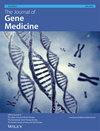BRIX1 promotes ribosome synthesis and enhances glycolysis by selected translation of GLUT1 in colorectal cancer
Abstract
Background
Ribosome biogenesis protein BRX1 homolog (BRIX1) is critically required for the synthesis of the 60S ribosome subunit. However, the role and mechanism of BRIX1 in colorectal cancer (CRC) remain unclear.
Methods
Kyoto Encyclopedia of Gene and Genome pathway and Gene Ontology analyses were used for bioinformatics analysis. The rRNA levels were detected in CRC tissues and cells. Nascent RNA synthesis was detected via cellular immunofluorescence. The correlation was analyzed between patient Positron Emission Tomography-Computed Tomography (PET–CT) values and their BRIX1 expression. The extracellular acidification rate (ECAR) and oxygen consumption rate were determined via live metabolic analyses. Polysome fractions were collected for BRIX1 mRNA used in translation. The orthotopic model and Cell Counting Kit-8 (CCK8) assay were used to assess BRIX1 function in CRC.
Results
BRIX1 is a core protein involved in ribosome-related pathway changes in CRC. Gene Ontology analysis showed that BRIX1 was primarily enriched in ribosome assembly and ribosome biogenesis pathways. In fresh CRC tissue, rRNA levels (5S, 5.8S, 18S and 28S) were higher in the BRIX1 high-expression group than in the BRIX1 low-expression group. Similarly, BRIX1 knockdown significantly decreased rRNA levels for 5S, 5.8S, 18S and 28S in CRC cells, whereas overexpression of BRIX1 significantly increased these levels. In addition, BRIX1 knockdown inhibited nascent RNA synthesis in CRC cells. In clinical data analysis, BRIX1 expression was related to the glucose uptake in PET–CT. BRIX1 knockdown significantly decreased the ECAR value, glucose uptake and lactic acid production in CRC cells, whereas BRIX1 overexpression significantly increased these. Furthermore, BRIX1 knockdown significantly decreased the protein expression of GLUT1, whereas BRIX1 overexpression significantly increased this; however, expression of BRIX1 mRNA was unaffected in either case. Blocking glycolysis by si-GLUT1 or galactose reversed BRIX1 promotion of glycolysis and cell proliferation in CRC cells.


 求助内容:
求助内容: 应助结果提醒方式:
应助结果提醒方式:


